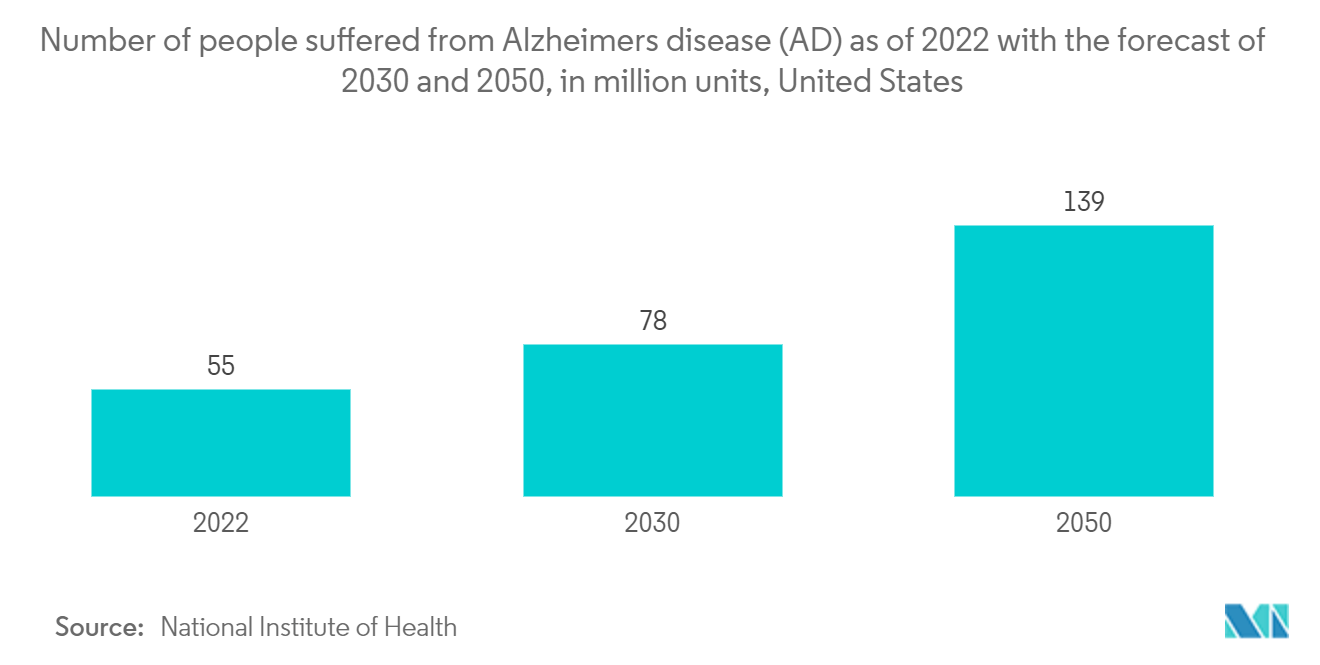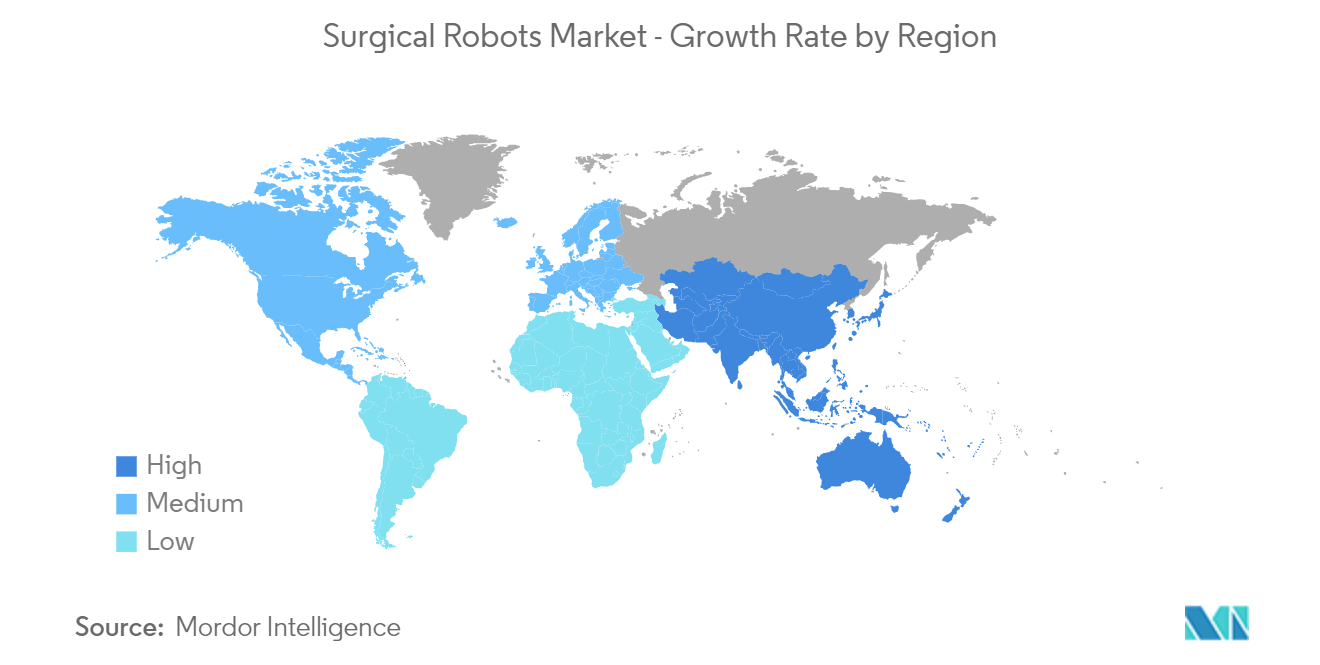Market Trends of Surgical Robots Industry
Neurosurgery to Hold Substantial Market Share
- Neurosurgery has a lower adoption rate of surgical robots than other medical specialties like urology and cardiology. The brain has susceptible tissues, which has affected the growth pace and the structural difficulties in such a complex and spatially constrained organ. Despite this, issues, including the aging population and a shortage of healthcare staff, have also contributed to the demand for these surgical robots.
- The frequency of neurological problems such as strokes, neurodegenerative diseases, epilepsy, persistent migraines, and others is rising, and physicians are adopting new technologies at an increasing rate, which will inevitably lead to the rise of the neurosurgery market.
- Moreover, developments in this space have provided the impetus for market growth. For instance, in August 2022, the Sontag Innovation Fund, a wholly-owned subsidiary of The Sontag Foundation, one of the largest private funders of brain cancer research in the United States, provided funding to AiM Medical Robotics and the company unveiled a prototype of its industry-first robotics platform. The Sontag Innovation Fund invests in cutting-edge, early-stage technologies that can potentially find therapies for brain cancer and enhance patients' quality of life or lifespan.
- Similarly, Brain Navi Biotechnology, a Taiwanese manufacturer of surgical robots, has created a neurosurgical navigation robot called NaoTrac that combines robotics, artificial intelligence (AI), and machine vision to streamline RAS procedures with real-time imaging and minimally invasive results.
- Therefore, the global neurosurgery market is driven by several factors that contribute to the market's growth. The primary drivers of the market include the increasing prevalence of neurological disorders such as epilepsy, Alzheimer's disease (AD), and PD and the popularity of navigation with multimodality imaging. Also, the increase in the demand for MI endovascular surgeries and technological advances are expected to contribute significantly to the market's growth.
- Furthermore, around 55 million individuals worldwide suffer from dementia, with AD accounting for 60-70% of cases. This is anticipated to increase to 78 million in 2030 and 139 million in 2050 due to the fact that the proportion of older people in the population is rising in almost every country. It is significant to emphasize that dementia, which carries the biggest economic burden, is currently the seventh leading cause of mortality in the world. It is currently becoming more and more clear that undiagnosed and unannounced seizures occur in a significant proportion of AD patients and are eight to ten times more common in AD patients compared to the general population. This will drive the market growth during the forecast period.

Asia-Pacific to Witness the Highest Growth
- Due to rising demand in China, Japan, and India and the expansion of the entire robotics industry, Asia-Pacific is anticipated to have the fastest growth rate. A select number of wealthy patients who can afford pricey operations make up most of the surgical robot market in China. However, introducing domestic equivalents has reduced the cost, which is anticipated to spur implementation. The technical improvements made in Asia, especially in Japan, China, and South Korea, have opened up new revenue streams for the markets for medical robotic systems.
- Since these devices have been receiving clinical approval for complex surgical procedures, the healthcare industry is rapidly benefiting from the introduction of innovative surgical robots. Millennial parents in Asian nations are more likely to embrace surgical robots than those in the United States and the United Kingdom, according to a poll by the IEEE (a Society for electronic engineering). This tendency is well warranted since Asia-Pacific is expected to see rapid expansion throughout the predicted period.
- Minimally invasive surgical robots are widely used in urology, cardiothoracic surgery, gynecology, general surgery, and other fields due to their simple operation, high surgical accuracy, and adequate postoperative results. In addition, the companies in the region have gradually started leasing robots to hospitals to increase the uptake of products and promote growth despite the high initial and maintenance cost of these robots.
- Robot efficiency is being increased by manufacturers working with engineers to enhance patient outcomes. Companies are improving the efficiency of their AI and machine learning to make surgical robots a common method in operating rooms throughout the world. Additionally, some of the top surgical robot manufacturers have established their research and development facilities in the area. For instance, two Research and Development Centres are run by Medtronic in Bangalore and Hyderabad, respectively.

